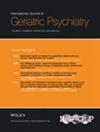Depressive Symptomatology Is Associated With Self-Reported Impaired Postural Balance in Older Adults: A Cross-Sectional Study in Primary Care in Brazil
Abstract
Objectives
Age-related balance deficits and depression are common among older people and challenging for public health. However, the association between postural imbalance and depression has scarcely been investigated in large samples, especially in low- and middle-income countries (LMICs) whose populations are ageing rapidly. Here, we estimated the prevalence of postural imbalance and examined its association with depressive symptomatology among older adults living in a socioeconomically deprived area of Brazil.
Methods
The analysis used screening data from the PROACTIVE cluster randomised controlled trial—specifically, socioeconomic, demographic and health information from individuals aged 60 years and older registered at one of 20 primary health clinics in Guarulhos and who provided complete data for our analyses. Self-reported postural imbalance was the outcome and it was assessed with a single question. Participants who reported postural imbalance were asked about the number of falls they had experienced in the previous 6 months. The prevalence of postural imbalance and postural imbalance with or without falls was estimated. Depressive symptomatology was assessed using the Patient Health Questionnaire-9 (PHQ-9). The association between depressive symptomatology (PHQ-9 score ≥ 10) and three ordered categories of the outcome (no postural imbalance, postural imbalance without falls and postural imbalance with falls) was investigated using adjusted mixed-effects ordered logistic regression.
Results
The study included 2999 individuals. Postural imbalance was reported by 1183 participants (39.4%; 95% confidence interval: 37.7%, 41.2%), comprising 792 non-fallers and 391 fallers (26.4% and 13.0% of all participants, respectively). For participants with depressive symptomatology, the odds of having postural imbalance with or without falls versus not having postural imbalance is 2.88 (95% confidence interval: 2.44, 3.40) times that of participants without depressive symptomatology. Likewise, for participants with depressive symptomatology, the odds of having postural imbalance with falls versus having postural imbalance without falls combined with not having postural imbalance is 2.88 (95% confidence interval: 2.44, 3.40) that of participants without depressive symptomatology.
Conclusions
Postural imbalance is a common occurrence in a vulnerable older population in Brazil. Importantly, we found that depressive symptomatology was associated with increased odds of having postural imbalance and postural imbalance with falls experienced in the previous 6 months. Notwithstanding our analyses' exploratory nature, these issues should receive greater attention in primary care practice and research.

 求助内容:
求助内容: 应助结果提醒方式:
应助结果提醒方式:


